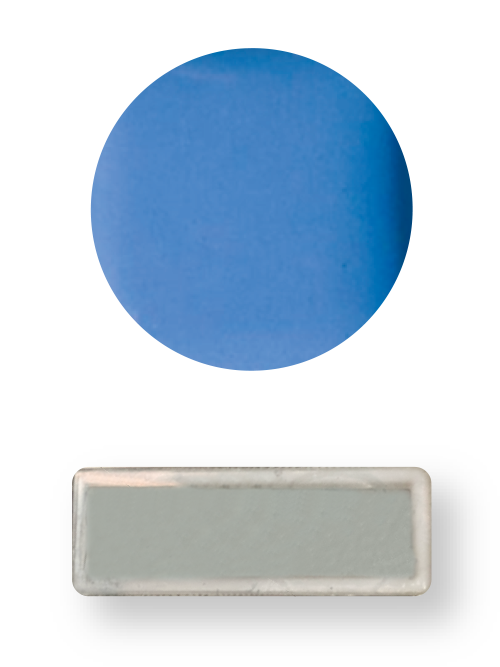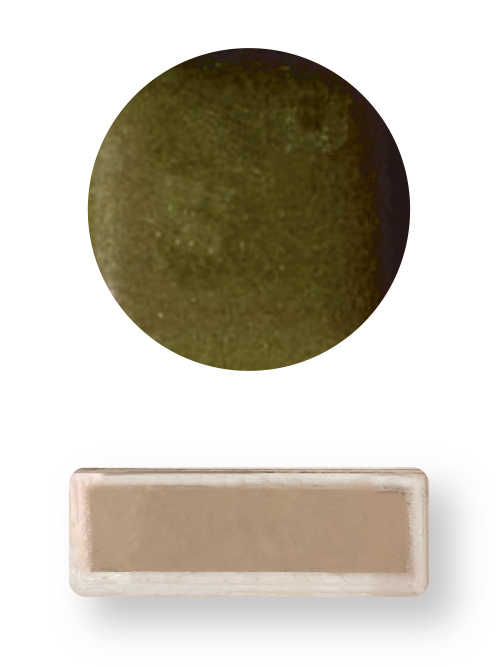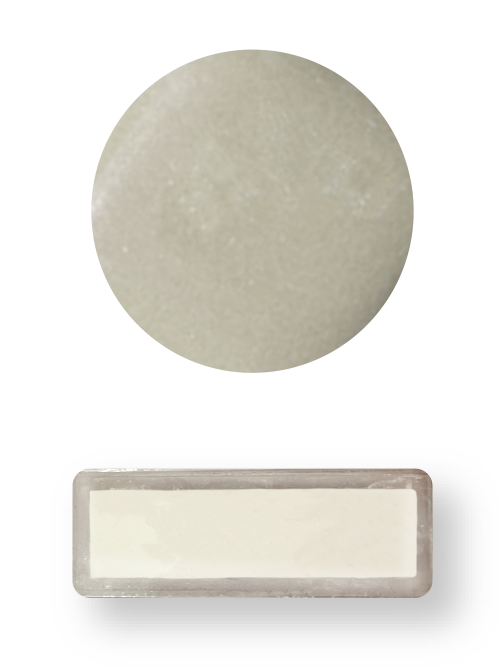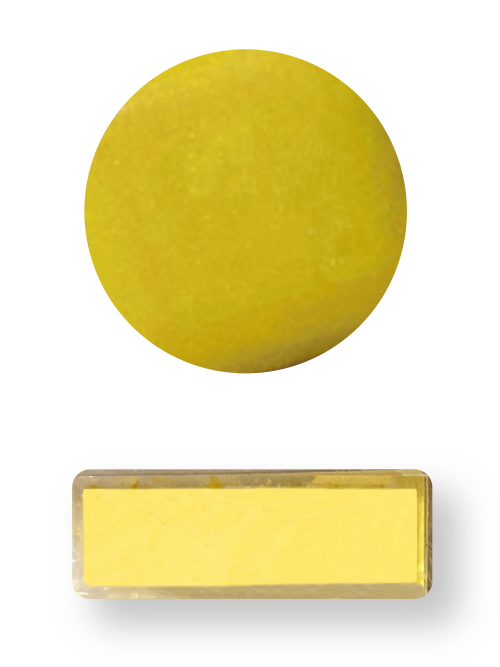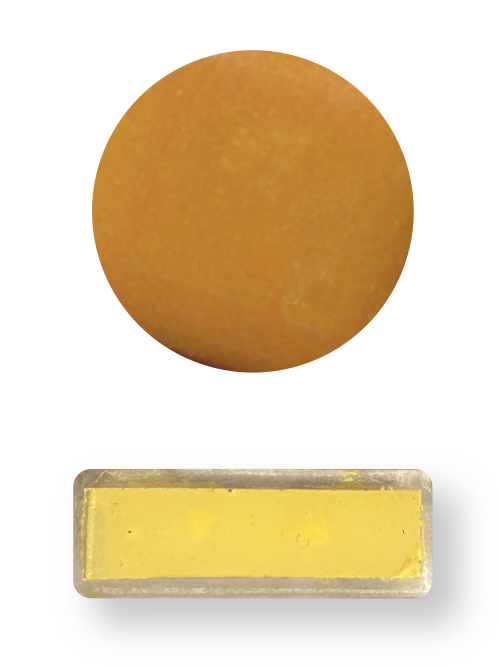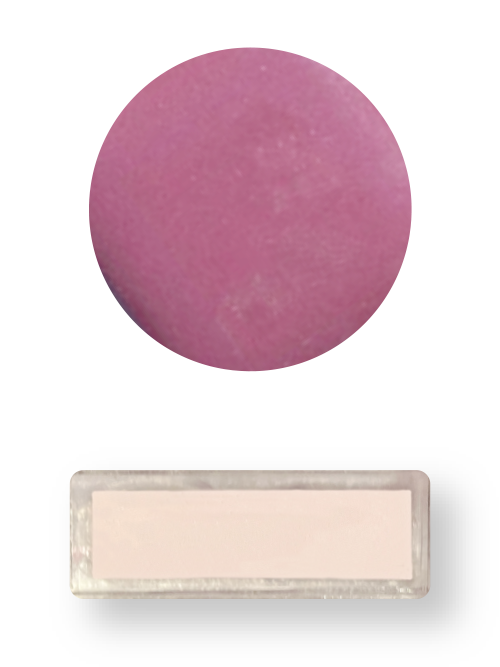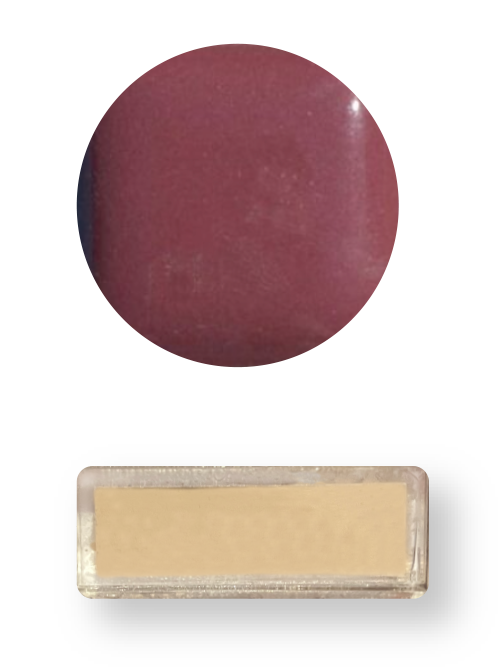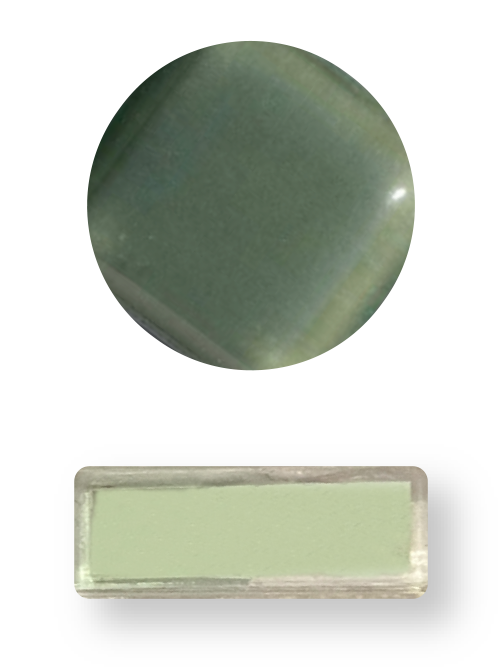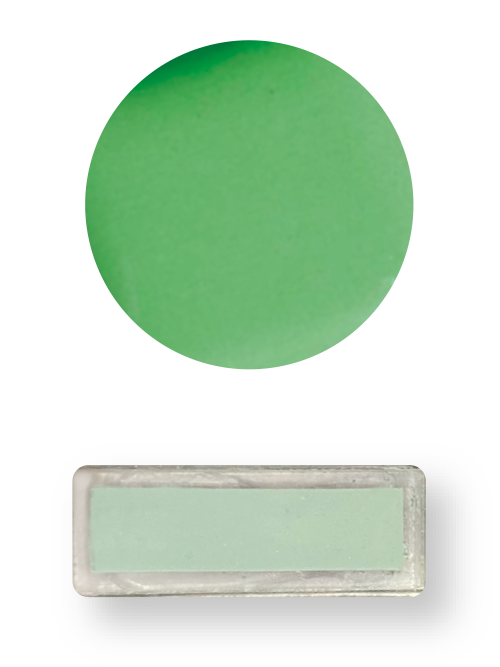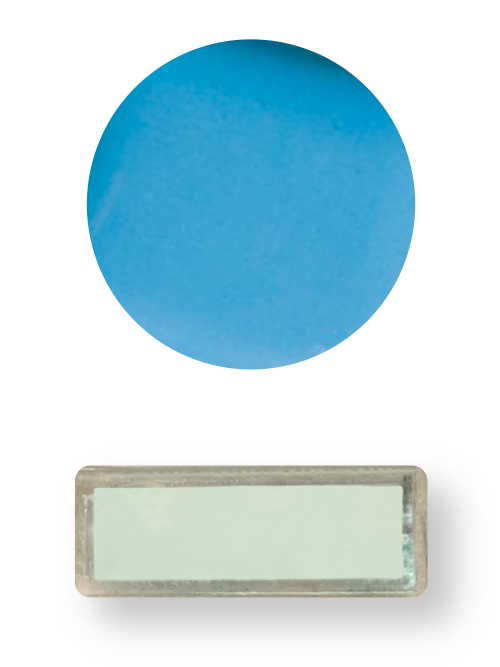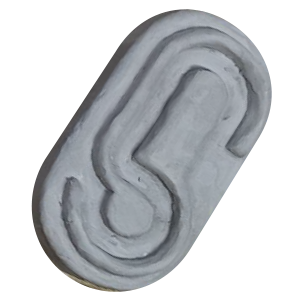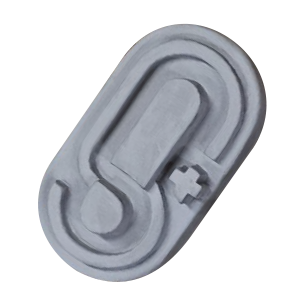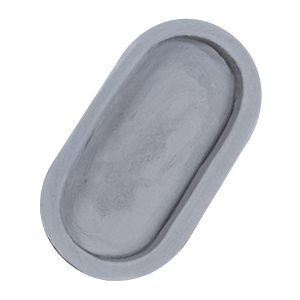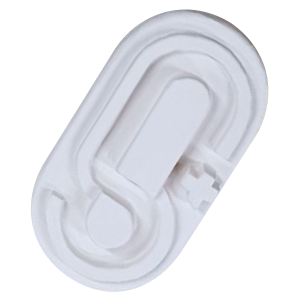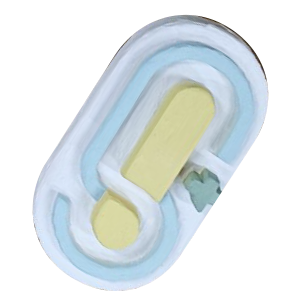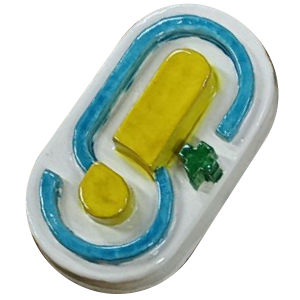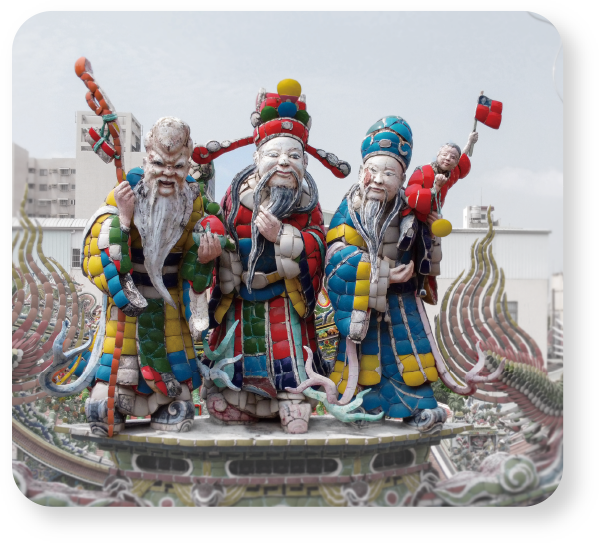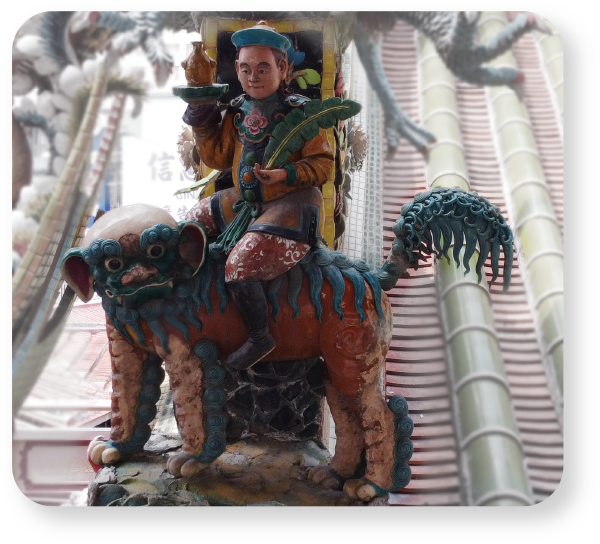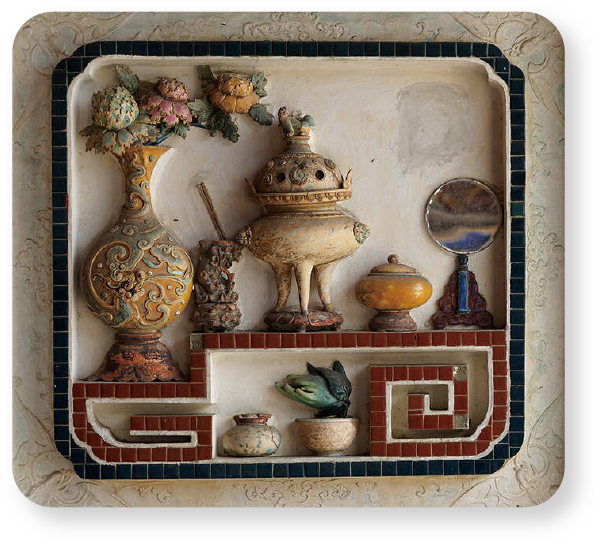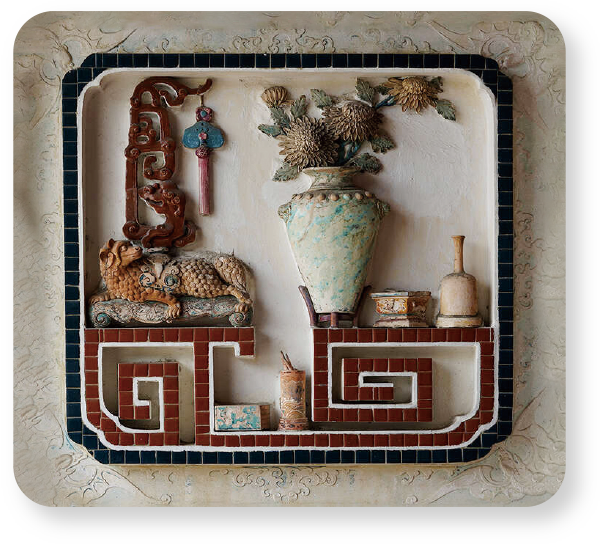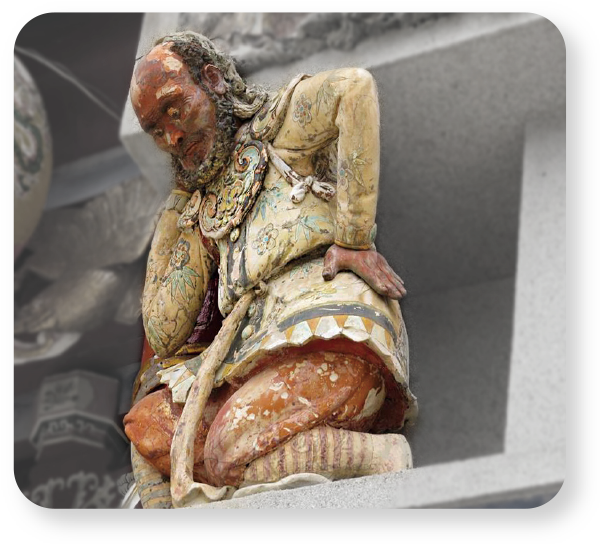The Rainbow of Glaze Colors
The colorful glaze of Koji pottery is closely related to the formula of the glaze. Traditional glaze is made by firing a mixture of different mineral powders. "Basic glaze" and "colorants" can be mixed to create various colors. In addition to transparent and black, there are eight basic colors. The colors of Koji pottery after firing are influenced by many factors, such as the composition of the glaze, the thickness of the glaze application, the firing time, and the "atmosphere" inside the kiln. Therefore, Koji pottery can exhibit a wide variety of visual effects.
-
Sapphire Blue
-
Black
-
Transparent
-
Bright Yellow
-
Aged Yellow
-
Vermillion Red
-
Red Bean Purple
-
Jade Green
-
Dark Green
-
Azure
How is Koji Pottery Made?
NTSEC logo (Koji pottery production process)
-
Sketching
First, outline the desired shape and form.
-
Molding&Shaping
Use techniques like pinching, stacking, sculpting, pasting, carving, and cutting to form the clay body.
-
Drying
Let the clay body dry until it reaches a semi-dry state.
-
Hollowing
Hollow out the body to ensure even shrinkage during firing and reduce the chance of cracking.
-
Bisque Firing
After complete drying, fire the clay body in a high-temperature kiln for the first firing, called bisque firing. The temperature during this process is approximately 1000 degrees Celsius.
-
Glazing
Mix glaze powder with water and apply it to the surface of the clay body.
-
Glaze Firing
Fire the pottery again at temperatures ranging from 850 to 900 degrees Celsius for the second firing, resulting in the brilliant glaze colors.
Ancient Tales of the Temple Koji Figurines
The "Sanchuan Hall" refers to the frontmost part of a temple with three doors, characterized by fancy and detailed decorations.
Let's learn more about their stories!
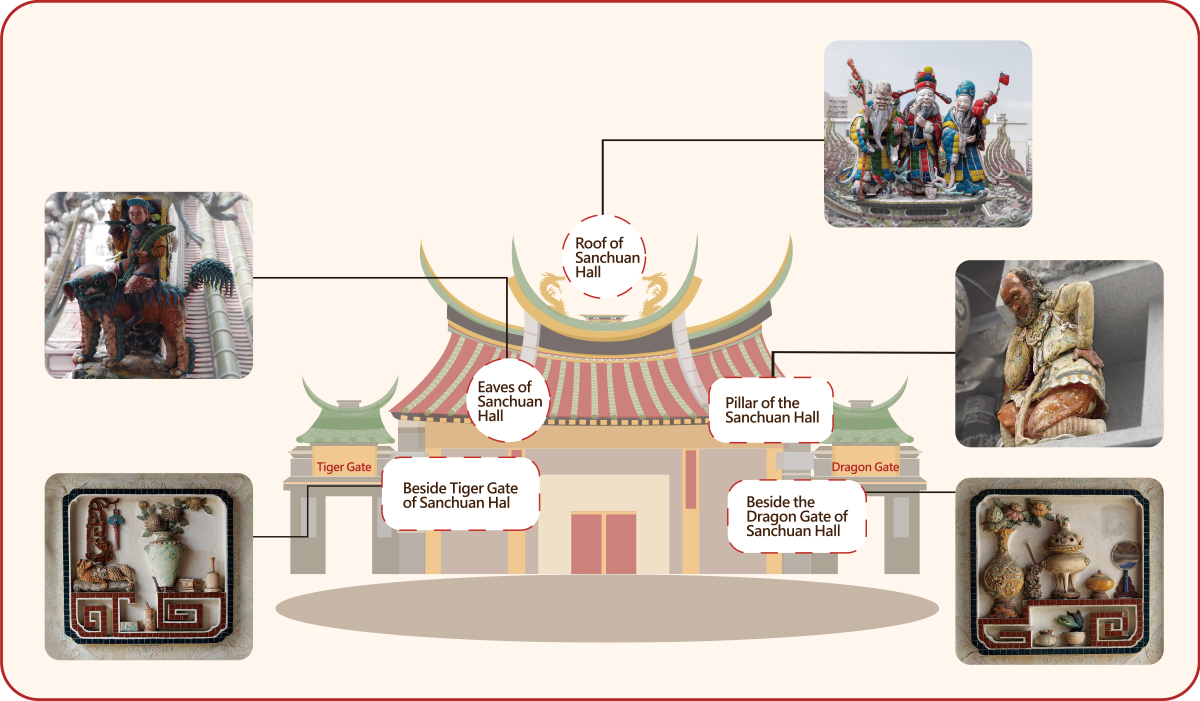
-
Three Immortals of Prosperity, Status, and Longevity
Location: Roof of Sanchuan Hall
They represent wealth, long life, and many offspring, and they're placed on the main temple roof to show their importance. Two dragons face each other at the ends, looking like they're paying respects to a tower. One of them holds a national flag, blending old and new elements, showing unity and patriotism. This further highlights the unity and patriotic spirit the government wanted to promote at that time, adding to the enjoyment of the viewing experience.
The Paper-cut Works of "Ye Zong, Ye Jinyi, and Ye Jinlu Father and Sons"
-
Tribute from the Exotic Foreigners
Location: Eaves of Sanchuan Hall
This temple figurine, with a crown, beard, and wearing exotic clothes, represents a rare sight among the rooftop decorations of temples. He's depicted as a foreigner (referred to as a "Hu person," meaning someone from another ethnicity.) In his right hand, he holds a wine vessel, while in his left hand, he carries a banana leaf symbolizing blessings. He's also riding a mythical Chinese beast, symbolizing blessings coming from afar.
"Lin Guangyi's Replica of Ye Wang's Works"
-
Bo-Gu
Location: Beside the Dragon Gate of Sanchuan Hall
On the side walls, there are "Bo-Gu" frames (also known as "Curio Box"), which hold decorative items with specific meanings. On the dragon side, the vase symbolizes peace, the peony symbolizes prosperity, the incense burner symbolizes passing down traditions, the mirror symbolizes peaceful coexistence, and the Buddha's hand gourd symbolizes longevity.
"Ye Wang's Works"
-
Bo-Gu
Location: Beside Tiger Gate of Sanchuan Hall
On the tiger side, the decorative items hold symbolic meanings: the vase symbolizes peace, the chrysanthemum symbolizes living in comfort and pursuing a career (as the word for chrysanthemum sounds like "comfort" and "leaf" in the local Taiwanese Hokkien dialect), the chime symbolizes joyous occasions, and the chi-tiger symbolizes blessings (as their names sound similar in Taiwanese Hokkien dialect). Upon closer inspection, the decorations on the vase and incense burner are finely crafted, showcasing the distinctive feature of Ye Wang's work.
"Ye Wang's Works"
-
Han Fan Holds Up the Temple Corners
Location: Pillar of the Sanchuan Hall
Between the eaves and pillars of the San Chuan Hall, there is a figurine called "Han Fan" carrying the temple's corner. "Han Fan" symbolizes great strength and is adept at bearing heavy loads. He dutifully carries the temple's corner, ensuring the stability of the temple.
"Ye Wang's Works"
